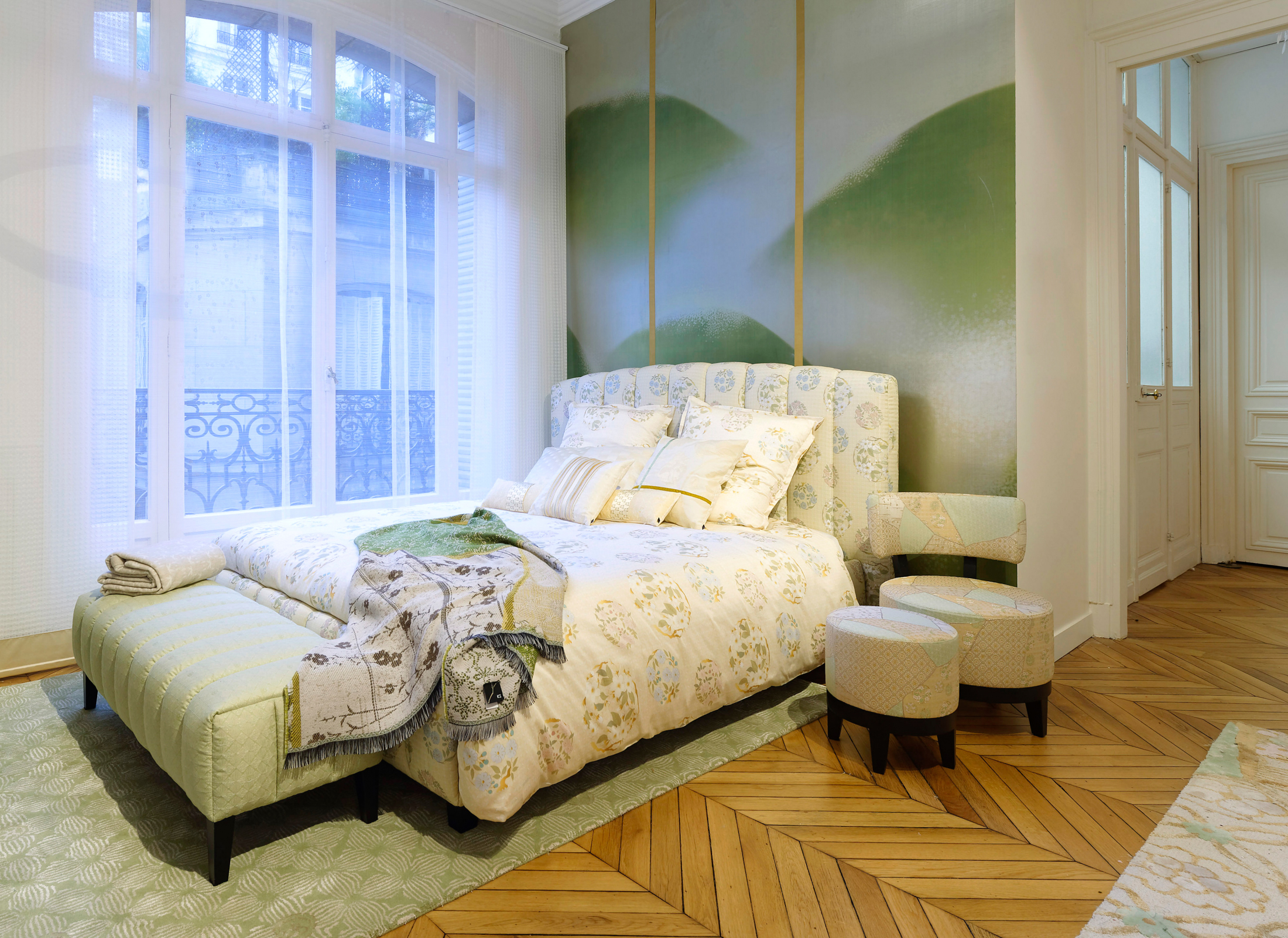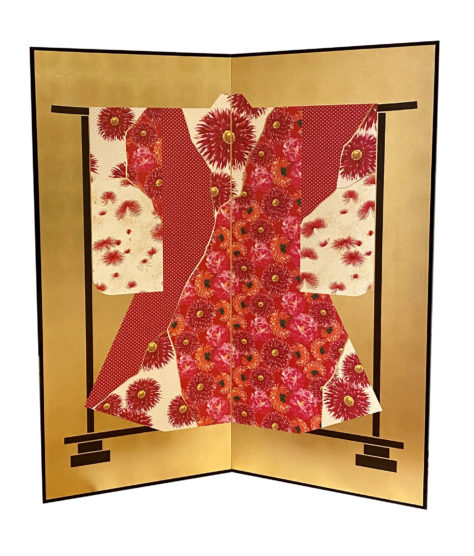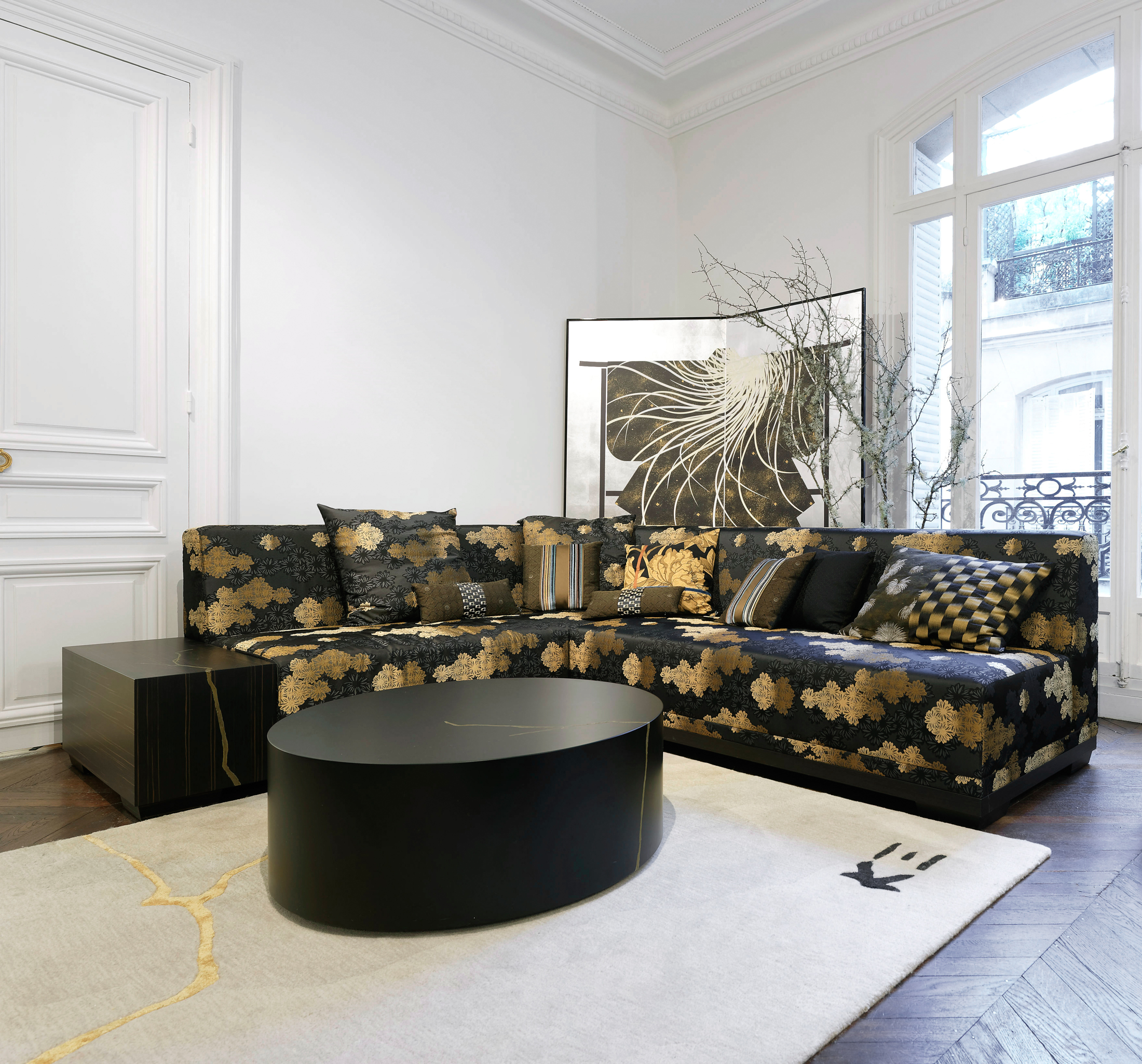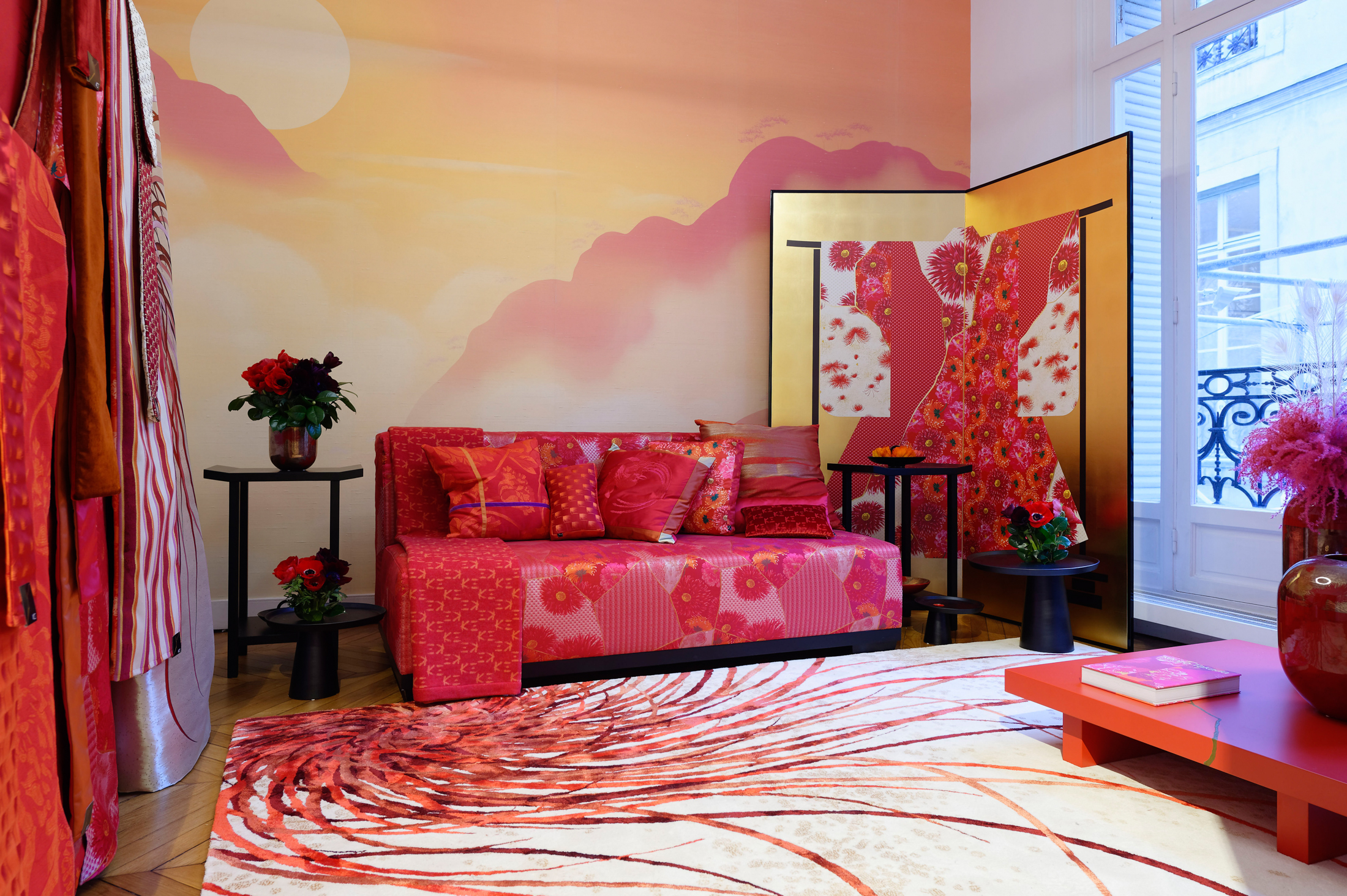This story from our archives was first published on Feb 6, 2020.
A pioneer of the ready-to-wear collections of 1970s Paris fashion, Kenzo Takada says he now wants to create styles that last for years, not just a season.
Last month saw the culmination of his transition from fashion to high-end homeware with the launch of his new interior design brand, K三 (or K3, using the Japanese character for the number three), at Maison & Objet. “It was a natural progression for me,” he says, 20 years after retiring from his eponymous fashion label Kenzo and handing its reins to LVMH.
Known for vivid colours and expressive graphics, reminiscent of both Japan’s Muromachi period costumes and Henri Rousseau’s The Dream, Takada’s furniture and home decor still showcase his bold use of cultural influences.

Bright prints are a feature of Takada’s clothing and furniture designs. Photo courtesy of K三.
“It’s a slower-paced environment than the fashion world,” the 80-year-old designer adds, through his colleague and translator, K三 managing partner Jonathan Bouchet Manheim. “Given my age, I now prefer to work in a more long-term environment.”
Takada’s fashion legacy dates back to the early 1970s when, as a young immigrant and recent fashion school graduate from Japan, he opened his own boutique in Galerie Vivienne (initially named Jungle Jap, until the contentious name proved a challenge in some markets.)
Long before Asian fashion designers such as Yohji Yamamoto or Rei Kawakubo became mainstays of Paris Fashion Week, Takada paved the way, planting the idea of dismantling one’s own culture to gain perspective into it. By distancing himself from his own background, Takada discovered new focal points of Japan’s tradition and injected it onto the runways of Paris.

Takada’s work draws on Japanese culture, while distancing itself from it. Photo courtesy of K三.
Even after retirement, Takada never left his drawing board. In 2017, he partnered with the French furniture house Roche Bobois to reimagine their iconic Mah Jong sofa, inspired by the traditional Japanese artform of Noh theatre. His newly revealed project is also infused with three distinctly Japanese themes: sakura (cherry blossom), maiko (young geisha) and shogun (emperor)—though he’s quick to point out that his designs transcend cultural borders.
“We are always inspired by the aesthetics from different cultures and blend them together to create pieces with savoir faire,” he says.

Gold kintsugi features draw on Japanese artisanship. Photo courtesy of K三.
In Takada’s new line of sofas, chairs, textiles, and decorative home objects—many created in collaboration with more than 200 artisans and advisors, including creative assistant Engelbert Honorat—K三’s savoir faire shines through its shimmering kintsugi marks, inspired by Japan’s traditional craft of fixing broken ceramics with gold. The vibrant floral motifs and boldly reinterpreted Japanese graphics are reminiscent of Takada’s days at Kenzo, where he strived to free the body from the tightly fit womenswear of the time.
His home design philosophy is equally committed to comfort and joy. “I want them to be full of life,” he says. “It is important for me to transmit as much positivity as possible.”
This story from our archives was first published on Feb 6, 2020. Read more in our Design section.










